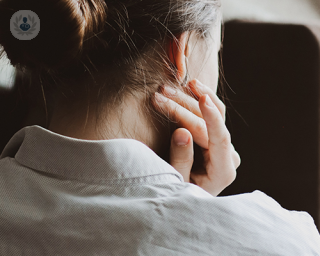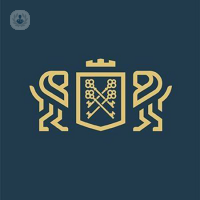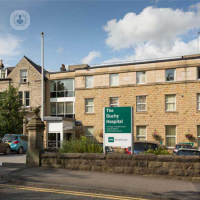What is degenerative disc disease?
We all have discs between the vertebrae, which, in young, healthy people, act as shock absorbers, helping the back to stay flexible and absorb the impact between the bones caused by movement. However, the natural ageing process leads to wear and tear, and the once rubbery discs shrink and lose integrity. This is known as degenerative disc disease (DDD).
Despite its name, degenerative disc disease is not a true disease, nor is it progressively degenerative. However, it can lead to low back pain (with or without sciatica), particularly if the discs collapse completely, leading to osteoarthritis.

What are the symptoms of degenerative disc disease?
Degenerative disc disease presents a series of localised symptoms, usually in the lower back or in the neck, depending on the location of the affected discs. Symptoms include:
- Pain that can range from mild and nagging to persistent and disabling
- Pain in the lower part of the back, which radiates towards the buttocks and thighs
- Pain in the neck that radiates to the arms and hands
- Pain that gets worse when sitting
- Pain when bending, getting up or twisting the body
- Pain that is relieved when walking and moving
- Pain that decreases if you change position often
- Severe intermittent pain, lasting from a few days to months
- Tingling and numbness in extremities
- Muscle weakness in the legs and feet
What are the causes of degenerative disc disease?
There are several factors that cause degenerative disc disease, mostly associated with natural wear and tear over time:
- Ageing
- Dry discs – as we age the spinal discs dry out, meaning they are less capable of absorbing shock.
- Activity, exercise and sports – over time, activity can lead to tears in the outer core of the discs.
- Injuries
What is the treatment for degenerative disc disease?
The main objective of treatment is to manage the pain. To this end, it is necessary to exercise to increase the strength and flexibility of the muscles that surround the spine. Exercise increases blood circulation to the back, providing the joints and muscles with oxygen and nutrients, and carrying inflammatory waste products away.
In addition, there are treatments that promote the strengthening of the back:
- Physical therapy
- Medications, including non-steroidal anti-inflammatories (NSAIDs) and pain relievers (consult your doctor about what medications you should take, if any).
- Surgery – this may involve replacement of the discs with artificial implants or spinal fusion
- Spinal mobilisation
- Applying heat and cold to the painful area
Degenerative disc disease
Mr G Michael Hess - Orthopaedic surgery
Created on: 02-26-2013
Updated on: 06-08-2023
Edited by: Conor Lynch
What is degenerative disc disease?
We all have discs between the vertebrae, which, in young, healthy people, act as shock absorbers, helping the back to stay flexible and absorb the impact between the bones caused by movement. However, the natural ageing process leads to wear and tear, and the once rubbery discs shrink and lose integrity. This is known as degenerative disc disease (DDD).
Despite its name, degenerative disc disease is not a true disease, nor is it progressively degenerative. However, it can lead to low back pain (with or without sciatica), particularly if the discs collapse completely, leading to osteoarthritis.

What are the symptoms of degenerative disc disease?
Degenerative disc disease presents a series of localised symptoms, usually in the lower back or in the neck, depending on the location of the affected discs. Symptoms include:
- Pain that can range from mild and nagging to persistent and disabling
- Pain in the lower part of the back, which radiates towards the buttocks and thighs
- Pain in the neck that radiates to the arms and hands
- Pain that gets worse when sitting
- Pain when bending, getting up or twisting the body
- Pain that is relieved when walking and moving
- Pain that decreases if you change position often
- Severe intermittent pain, lasting from a few days to months
- Tingling and numbness in extremities
- Muscle weakness in the legs and feet
What are the causes of degenerative disc disease?
There are several factors that cause degenerative disc disease, mostly associated with natural wear and tear over time:
- Ageing
- Dry discs – as we age the spinal discs dry out, meaning they are less capable of absorbing shock.
- Activity, exercise and sports – over time, activity can lead to tears in the outer core of the discs.
- Injuries
What is the treatment for degenerative disc disease?
The main objective of treatment is to manage the pain. To this end, it is necessary to exercise to increase the strength and flexibility of the muscles that surround the spine. Exercise increases blood circulation to the back, providing the joints and muscles with oxygen and nutrients, and carrying inflammatory waste products away.
In addition, there are treatments that promote the strengthening of the back:
- Physical therapy
- Medications, including non-steroidal anti-inflammatories (NSAIDs) and pain relievers (consult your doctor about what medications you should take, if any).
- Surgery – this may involve replacement of the discs with artificial implants or spinal fusion
- Spinal mobilisation
- Applying heat and cold to the painful area


Degenerative spinal disease: causes, symptoms and treatment
By Mr Venkat Iyer
2024-11-20
Degenerative spinal disease is a condition can cause a gradual decline in the usual function and structure of the spine. In this informative article, highly experienced and skilled neurosurgeon and spinal surgeon, Mr Venkat Iyer, offers expert insight on the condition, including its causes and symptoms, whilst also detailing the treatment options for degenerative spine disease. See more


A common cause of back pain: a guide to degenerative spine disease
By Professor Keyoumars Ashkan
2024-11-20
DSD is relatively common in the Western world, due to its ageing population. Most people over the age of 40 experience some degree of degeneration, with people over 70 even more commonly and severely affected. Professor Ashkan, leading neurosurgeon, explains the condition. See more


Low back pain and how a pain management specialist can help you
By Dr James Jack
2024-11-20
Low back pain is a condition that affects many people at some point in their lives. It can range from a dull, constant ache to a sudden, sharp pain that makes movement difficult. It’s crucial to understand the causes, symptoms, and treatment options for low back pain in order to manage this condition effectively. Here to provide a detailed look at low back pain and how a pain management specialist can help, is leading consultant pain management specialist Dr James Jack. See more


What to watch for with back pain: the signs and symptoms of degenerative disc disease
By Mr Irfan Malik
2024-11-19
Lower back pain, neck pain, neck spasms, numbness and weakness in the legs - these are all potential signs of degenerative disc disease. Learn what your symptoms might indicate with expert neurosurgeon Mr Irfan Malik. See more
Experts in Degenerative disc disease
-
Mr Irfan Malik
NeurosurgeryExpert in:
- Spinal endoscopy
- Degenerative disc disease
- Spinal surgery
- Spinal cancer
- Robotic spine surgery
- Minimally invasive spinal surgery
-
Mr Christos Tolias
NeurosurgeryExpert in:
- Vascular malformations
- Spinal surgery
- Degenerative disc disease
- Brain aneurysm
- Arteriovenous malformation
- Back pain
-
Professor Arun Ranganathan
Orthopaedic surgeryExpert in:
- Scoliosis
- Spinal column
- Minimally invasive spinal surgery
- Degenerative disc disease
- Spinal injections
- Spinal fusion
-
Mr Caspar Aylott
Orthopaedic surgeryExpert in:
- Degenerative disc disease
- Discectomy
- Minimally invasive spinal surgery
- Spine fracture
- Back pain
- Sciatica
-
Mr Ravindra Nannapaneni
NeurosurgeryExpert in:
- Degenerative disc disease
- Minimally invasive spinal surgery
- Brain tumour
- Hydrocephalus
- Back pain
- Chiari malformations
- See all

The Wellington Hospital - part of HCA Healthcare
The Wellington Hospital - part of HCA Healthcare
Wellington Hospital South Bldg, 8A Wellington Pl, NW8 9LE
No existe teléfono en el centro.
By using the telephone number provided by TOP DOCTORS, you automatically agree to let us use your phone number for statistical and commercial purposes. For further information, read our Privacy Policy
Top Doctors

The UK Spine Centre
The UK Spine Centre
19 Harley St, W1G 9QJ
No existe teléfono en el centro.
By using the telephone number provided by TOP DOCTORS, you automatically agree to let us use your phone number for statistical and commercial purposes. For further information, read our Privacy Policy
Top Doctors

The Duchy Hospital - part of Circle Health Group
The Duchy Hospital - part of Circle Health Group
Queen's Road, Harrogate HG2 0HF
No existe teléfono en el centro.
By using the telephone number provided by TOP DOCTORS, you automatically agree to let us use your phone number for statistical and commercial purposes. For further information, read our Privacy Policy
Top Doctors
-
The Wellington Hospital - part of HCA Healthcare
Wellington Hospital South Bldg, 8A Wellington Pl, NW8 9LE, Central LondonExpert in:
- Digestive
- Cardiology
- Orthopaedic surgery
- Orthopaedic spinal surgery
- Intensive care
- Spine
-
The UK Spine Centre
19 Harley St, W1G 9QJ, Central LondonExpert in:
- Kyphoplasty
- Laser disc surgery
- Lumbar discectomy
- Spine
- Spinal stenosis
- Lumbar fusion
-
The Duchy Hospital - part of Circle Health Group
Queen's Road, Harrogate HG2 0HF, HarrogateExpert in:
- Cardiology
- General Surgery
- Plastic surgery, reconstructive and aesthetics
- Diagnostic Imaging
- Ophthalmology
- Otolaryngology
- See all
- Most viewed diseases, medical tests, and treatments
- Joint pain
- Lumbar herniated disc
- Spinal surgery
- Minimal access surgery (keyhole surgery)
- Shoulder pain
- Parkinson's disease
- Osteoporosis
- Botulinum toxin (Botox™)
- Abnormal gait
- Shoulder osteoarthritis








